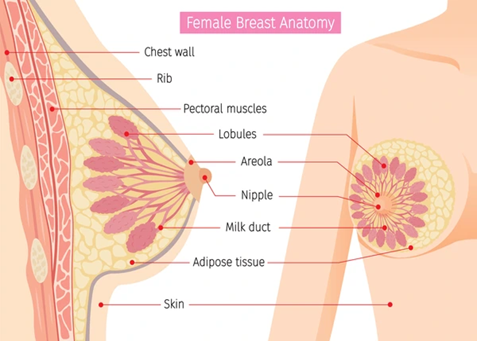Post
Does Having Small Breasts Make Breastfeeding Harder?
Many women secretly worry that their breast size might affect how well they can breastfeed.
It’s not unusual to hear comments like, “Ah, her breasts are too small, how will she feed a baby?” or “Big breasts mean plenty of milk,” and that if your breasts aren’t full and round, your baby won’t get enough to eat.
These beliefs are common in many Nigerian homes, especially among new or expectant mothers.
In reality, breast size has very little to do with how much milk a woman can produce. What truly matters lies deeper, in the milk-making tissue and how often the baby nurses.
Let’s look at what actually determines milk production and why smaller breasts don’t mean less milk.
What Determines Milk Production

The ability to make enough milk depends more on how your breasts work than on how they look.
Breast size mostly reflects the amount of fatty tissue, not how much milk your body can produce.
The key players are the milk glands and ducts, which women of all sizes have.
Several factors influence how much milk you make:
-
Frequent feeding: The more your baby suckles, the more signals your body gets to produce milk. It’s a simple supply-and-demand system.
-
Proper latch and positioning: When your baby attaches well to the breast, it allows milk to flow out easily, and the more milk your baby takes, the more your body is signaled to produce.
-
Hormones: Prolactin (for milk production) and oxytocin (helps milk flow out during feeding) play major roles.
-
Mother’s health and nutrition: Fatigue, dehydration, or stress can sometimes slow milk flow.
-
Avoiding long gaps between feeds: Skipping feeds or relying too early on formula can reduce supply over time.
In other words, whether your breasts are big or small, your milk supply depends on how your body responds to your baby’s feeding pattern, not the cup size on your bra tag.
When Breast Size Might Affect Breastfeeding
In most cases, breast size has nothing to do with how much milk a woman produces.
However, there are a few rare situations where it can play a role, though it’s usually not about size itself, but what’s happening inside the breast.
Some examples include:
-
Underdeveloped (hypoplastic) breasts: This happens when the milk-making glands didn’t form completely during puberty or pregnancy. The breasts may look widely spaced or uneven in size, and milk supply can be low.
-
Previous breast surgeries: Certain cosmetic or medical procedures can damage milk ducts or nerves, affecting milk flow.
-
Hormonal or medical conditions: Issues like thyroid imbalance or polycystic ovary syndrome (PCOS) can sometimes interfere with milk production.
When to Seek Help
Sometimes, even with your best effort, breastfeeding may not go as you hoped.
You should talk to a lactation consultant, midwife, or trained health worker if you notice any of these:
-
Your baby isn’t gaining weight or seems constantly hungry.
-
You have severe or persistent nipple pain.
-
Your breasts stay hard or swollen even after feeding.
-
You feel like your milk supply has suddenly dropped.
Most breastfeeding challenges can be solved with the proper guidance, whether it’s improving your baby’s latch, adjusting your feeding routine, or learning simple breast massage techniques to stimulate milk flow.
Remember, you don’t have to struggle alone. There’s support available at hospitals, antenatal clinics, and even online communities focused on breastfeeding and maternal health.
Summary
Breastfeeding isn’t a competition. Some women have more challenges than others, and that’s okay.
The important thing is finding what works for you and your baby, without feeling pressured by what people say about your body.
Every woman’s experience is different, and that doesn’t make anyone less of a mother.
Have you ever been told your breast size could affect breastfeeding? Or did you believe it at first?
Share your thoughts below, your story might help another mum see things differently.
Researched by Victoria Odueso
Login